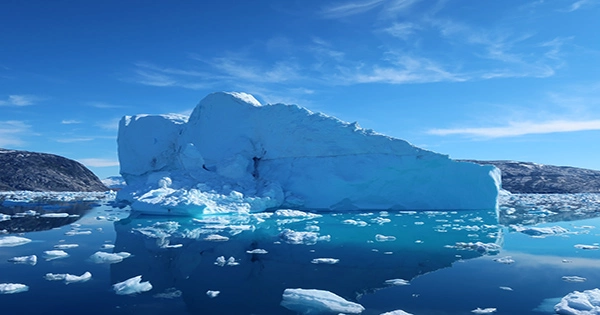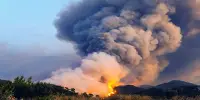According to a study published in the journal Nature Communications, the collapse of the ice sheets in West Antarctica is not unavoidable. A multinational team of experts from universities such as Edinburgh and Cambridge demonstrated how regional differences in ice melting rates are substantial.
The scientists obtained the most in-depth picture of how the West Antarctic Ice Sheet, which if it melted fully would raise sea levels by 3.3 meters, is responding to climate change by combining satellite photos with ocean records.
The findings demonstrate that, depending on local conditions, the rate of ice breakdown along the coast varies dramatically. The good news is that while the West Antarctic Ice Sheet is still melting, it is doing so at a slower rate over a susceptible area that was identified between 2003 and 2015. Changes in the water temperature in the area contributed to this slowness by altering the wind conditions.
The West Antarctic Ice Sheet, which is marine-based and contains the Pine Island and Thwaites glaciers, has been melting at a quicker rate since the early 1990s. This faster melting has been linked to century-long human-induced climate change. Researchers formerly held the belief that melting could not be stopped once it had begun, regardless of future climate influences. It transpires that’s not always the case.
Dr. Frazer Christie, the paper’s principal author from Cambridge’s Scott Polar Research Institute, said: “The idea that once a marine-based ice sheet reaches a certain tipping point, it will produce a runaway response has been well reported.” Despite this, there are still uncertainties regarding the degree to which ongoing climatic changes continue to control ice loss throughout the entire West Antarctic coastline.
The West Antarctic Ice Sheet has changed significantly regionally since 2003, according to the team’s analysis of satellite pictures, with the Amundsen Sea Sector experiencing substantially slower ice breakdown than the nearby Bellingshausen Sea Sector.
The researchers then analyzed climate and water records recorded in these areas and connected them with variations in surface wind speed and direction. The predominantly westerly winds in this region of Antarctica frequently whip up warmer, saltier water from deep in the ocean, which eventually reaches the Antarctic shoreline and speeds up ice melt.
However, between 2003 and 2015, this tendency was different. The strength of the predominant westerly winds decreased between 2003 and 2015 offshore of the Amundsen Sea Sector, according to Christie. “As a result, we noticed a noticeable change in the behavior of the related glaciers around the region: a definite reduction in the rate of melt and ice-mass loss.”
The complex interactions between the ice sheets, ocean, and atmosphere are highlighted in this study, which also raises significant concerns about how quickly the cold continent will change in a warming climate.
Professor Eric Steig of the University of Washington in Seattle, a co-author, noted that in West Antarctica, “ocean and atmospheric forcing mechanisms still really, really matter.” This proves that the disintegration of the ice sheet is not inevitable. It relies on the trajectory of the coming decades’ climate change, which we may influence favorably by cutting greenhouse gas emissions.
To determine how crucial these systems will be when more and more ice melts in the future, more research is required. According to Bingham, “this study underlines the urgent need to explain how quickly the West Antarctic Ice Sheet’s most susceptible parts, such as Thwaites Glacier, may recede, with worldwide repercussions for sea level rise.” This objective will be immediately addressed by new data that we are now gathering during a traverse across Thwaites Glacier in January.
“The temperature and how the ice is behaving have an intimate relationship,” said Christie. If we reduce carbon emissions, we can reduce the loss of West Antarctic ice.














